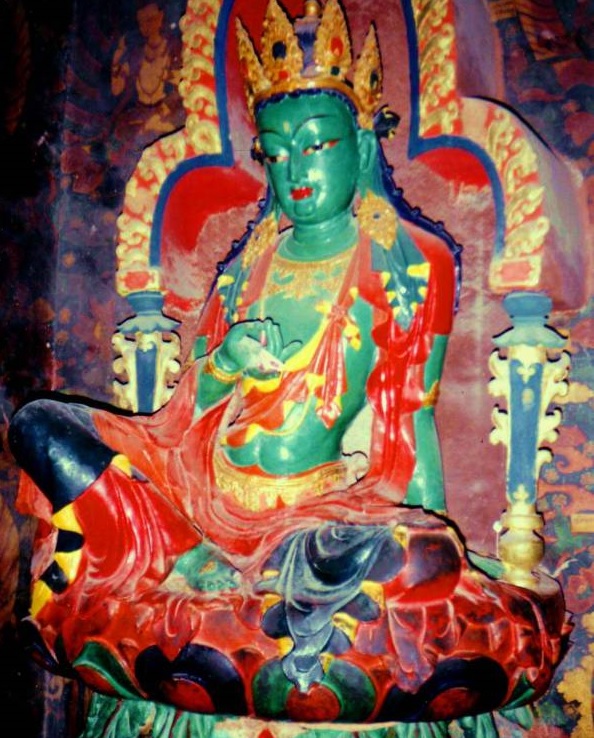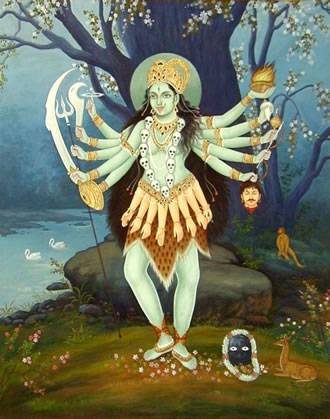No products in the cart.
Tara Devi – Hindu Goddesses and Deities
![]() In Hinduism, the goddess Tara is the second of the Dasa (ten) Mahavidyas. She is the tantric manifestations of Durga or Mahadevi, Kali, or Parvati. As the star is seen as a beautiful but perpetually self-combusting thing, so Tara is perceived at core as the absolute, unquenchable hunger that propels all life.
In Hinduism, the goddess Tara is the second of the Dasa (ten) Mahavidyas. She is the tantric manifestations of Durga or Mahadevi, Kali, or Parvati. As the star is seen as a beautiful but perpetually self-combusting thing, so Tara is perceived at core as the absolute, unquenchable hunger that propels all life.
As Per Shakti Mahabhagwat, She is the one who created 1st Seed from which the entire universe took birth in the form of Lord Narayana.
MYTHOLOGY AND LEGENDS:
The legend begins with the churning of the ocean between the Devas and Asuras. Lord Shiva drank the poison that was created from the churning of the ocean (in the process turning his throat blue and earning him the epithet Nilakantha), thus saving the world from destruction, but fell unconscious under its powerful effect. Mahadevi Durga/Parvati appeared as Maa Tara and took Shiva on her lap. She suckled him, the milk from her breasts counteracting the poison, and he recovered.
This story is reminiscent of the one in which Shiva stops the rampaging Kali by becoming an infant. Seeing the child, Kali’s maternal instinct comes to the fore and when she was feeding him her breast milk Shiva sucked her rage out while sucking the milk. In both cases, Shiva assumes the position of an infant in the Goddess lap.
ICONOGRAPHY:
Tara Devi is depicted as standing upon a supine Shiva in an inert or corpse-like form. She is shown blue in colour, wearing minimal clothing i.e. a tiger-skin skirt. She wears a garland of severed human heads, have a lolling tongue, and blood oozes from her mouth.
Tara Devi has four arms holding a sacrificial sword, a severed head or skull cup, a lotus and scissors. The scissor symbolizes Tara’s ability to cut through unwanted habits thus freeing the individual for spiritual transcendence.
OTHER NAMES:
Some researchers believe Paranasabari is another name for Hindu Goddess Tara, and Tara is the only female goddess not only worshiped in India but also Mongolia and Tsarist Russia. Again in Buddhist religion incidentally, Paranasabari is depicted as attendant of Buddhist deity of same name, Tara.
TARA DEVI MANTRA:
“Hreem Shreem Hoom Phat,
Om Hreem Shreem Hoom Phat,
Shreem Hreem Shreem Hoom Phat ||”
INCARNATIONS:

The Goddess Tara has had many incarnations now and far into the past. Her name is linked to many other Goddesses from around the world. She was the Star Woman of the Cherokees – Tara means Star in Sanskrit. She became the Earth to feed her people. She was the Goddess of the Druids. The great hill of the Druids, Tara, bears her name. Her name is linked to the Tar, a group of Goddess women of ancient Finland who were wise and powerful. She was worshipped by ancient Hindus as an aspect of Kali. She is living Goddess today to the Hindus of the Tantric tradition. She is one of the 10 Mahavidyas or Mothers, manifestations of the Devi. She is the most beloved diety of the Tibetan Buddhists. She is very similar to Kuan Yin of the Chinese Buddhist tradition – she is a Goddess of Compassion. She is also similar to Pavarti of today, with her many different forms, both friendly & fearsome. Kali is considered to be an aspect of Parvati. There is a form of the Goddess Tara in every culture. It is believed that she will assume as many forms on Earth as needed by the people. In all aspects, she loves and helps the people of the Earth in every way she can.
TEMPLES:
- Tarapith temple, West Bengal
- Tara Devi Temple, Shimla


